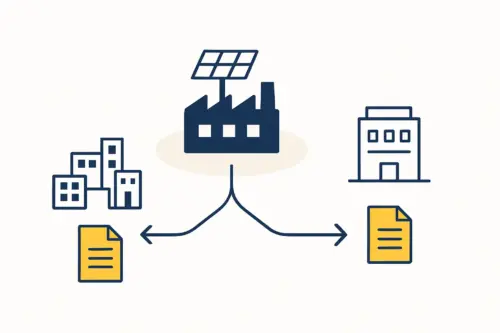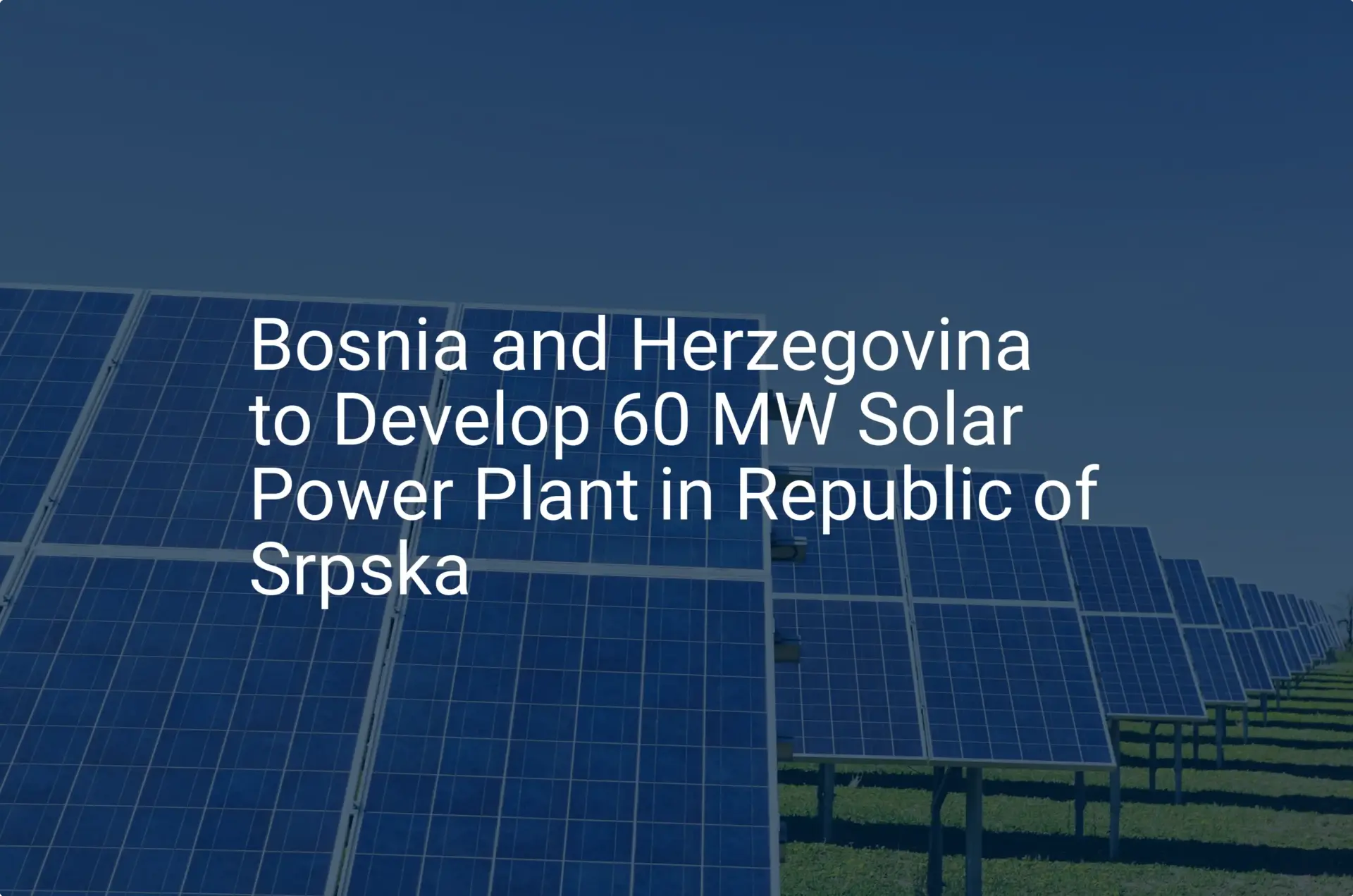Many entrepreneurs entering the solar manufacturing sector focus intensely on the initial capital expenditure—the cost of machinery. While this is a significant figure, unforeseen or underestimated operational costs often determine the long-term viability of the business.
An investor might secure funding for a state-of-the-art production line, only to discover that cash flow is strained by the day-to-day expenses of running the facility. This article provides a framework for estimating the annual operational expenditures (OpEx) for a 50 MW solar module factory in Bosnia and Herzegovina. By understanding these costs upfront, prospective investors can create a more robust and bankable business plan.
The figures presented are based on current local market data and experience from J.v.G. Technology GmbH projects in emerging markets, offering a realistic baseline for your financial model. For a complete overview, it helps to understand the broader context of how to start a solar factory.
Table of Contents
The Importance of Accurate Operational Cost Planning
Operational expenditures are the ongoing costs of running a business, distinct from the one-time investment in equipment and infrastructure. A precise OpEx model is the foundation of a sustainable business, directly influencing pricing strategy, profitability margins, and the break-even point.
Neglecting this part of the financial forecast is a common pitfall that can jeopardize an otherwise promising venture. A detailed budget shows financial institutions and partners that the project has been thoroughly planned, significantly increasing the chances of securing funding. It transforms a business idea into a concrete, data-driven plan.
Key Operational Cost Categories for a Bosnian Solar Factory
For a 50 MW solar module production facility operating on a two-shift schedule, operational costs fall into five primary categories. The following estimates are tailored to the specific economic environment of Bosnia and Herzegovina.
1. Labor Costs
A well-run factory depends on its skilled and motivated workforce. A 50 MW production line typically requires a team of 25–30 employees, including management, engineering, technical staff, and production operators.
Based on current salary benchmarks in Bosnia and Herzegovina, inclusive of social security contributions, a typical monthly cost structure looks like this:
- Production Engineers (2): ~€1,500 per person
- Technicians / Shift Leaders (4): ~€900 per person
- Unskilled Production Operators (20): ~€650 per person
- Administrative Staff (1-2): ~€1,000 per person
This staffing model brings the estimated monthly labor cost to around €20,600.
Estimated Annual Labor Cost: ~€250,000
Ready to make big Profits?
The solar Industry is Booming
WE HELP NEWCOMERS to the solar industry start their own solar module production line. Customers can make BIG PROFITS by selling modules and finding investors, without wasting money and time on things they don't need!
2. Energy Consumption and Costs
Solar module manufacturing is an energy-intensive process. A 50 MW production line typically consumes approximately 1.2 million kilowatt-hours (1.2 GWh) of electricity annually. The industrial electricity price in Bosnia and Herzegovina is competitive by European standards, currently averaging around €0.08 per kWh.
Calculation: 1,200,000 kWh * €0.08/kWh = €96,000
Estimated Annual Energy Cost: ~€96,000
3. Factory Building and Rent
A 50 MW assembly line requires a facility of about 3,000 square meters to accommodate production, warehousing, and office space. Industrial rental rates in strategic locations within Bosnia and Herzegovina average about €5 per square meter per month.
The country’s proximity to the European Union market offers a significant logistical advantage for export-oriented businesses.
Calculation: 3,000 m² * €5/m² * 12 months = €180,000
Estimated Annual Rental Cost: ~€180,000

4. Consumables and Spare Parts
This category covers all operational supplies needed to keep the production line running smoothly, such as machine lubricants, cleaning agents, and a budget for spare parts to minimize downtime. A reliable industry benchmark for this cost is 1.5% of the initial machinery investment.
While total investment costs for a 20-50 MW solar module production line can vary, a reasonable estimate for the machinery (CapEx) is €4,000,000. Understanding what machines are needed for solar module production helps clarify where these costs come from.
Calculation: €4,000,000 * 1.5% = €60,000
Estimated Annual Consumables & Spare Parts Cost: ~€60,000
5. Administrative and Other Overhead
This is a catch-all category for essential business expenses not directly tied to production, including:
- Business insurance
- Accounting and legal services
- Marketing and sales activities
- Telecommunications and IT services
- Travel expenses
- Annual product certification fees
A consolidated budget for these activities is crucial for smooth business operations.
Estimated Annual Administrative & Overhead Cost: ~€100,000

Summary of Estimated Annual OpEx
Combining these categories gives a clear picture of the annual operational budget needed for a 50 MW solar module factory in Bosnia.
Labor: €250,000
Energy: €96,000
Rent: €180,000
Consumables & Spare Parts: €60,000
Administrative & Overhead: €100,000
Total Estimated Annual OpEx: €686,000
This total of approximately €686,000 per year, or about €57,000 per month, provides a solid foundation for financial planning. It allows investors to accurately forecast cash flow needs and model long-term profitability.
Frequently Asked Questions (FAQ)
Q: Why is it so important to model OpEx accurately?
A: An accurate OpEx model prevents liquidity problems after the initial investment phase. It is essential for calculating the true cost per module produced, setting competitive sales prices, and demonstrating to banks or investors that the business is sustainable beyond the setup stage.
Q: How do these operational costs in Bosnia compare to Western Europe?
A: The primary advantage in Bosnia and Herzegovina lies in significantly lower labor and rental costs compared to countries like Germany or France. These factors can reduce overall OpEx by 30-50%, providing a substantial competitive advantage, especially for businesses targeting the European market.
Q: Can these operational costs be reduced?
A: Yes. Energy costs can be mitigated by installing a solar PV system on the factory roof—a practice with a strong return on investment. Implementing lean manufacturing principles and investing in automation can also improve labor productivity, while careful negotiation with suppliers can yield savings on consumables.
Q: What is a typical ramp-up period for a new factory?
A: A new production line does not reach full capacity overnight. Investors should budget for a 3–6 month ramp-up period where production output is lower, but fixed costs like rent and baseline salaries remain. This initial phase is critical for process optimization and team training.

Next Steps in Your Planning Journey
Estimating operational expenditures is a critical step in building a comprehensive business plan. This model for the Bosnian market provides a data-backed starting point for your own calculations.
Building a detailed financial forecast that includes both CapEx and OpEx transforms a general business idea into a project ready for serious consideration by partners and investors. Understanding these numbers is fundamental to launching a successful solar manufacturing enterprise. The next phase involves refining these estimates based on specific supplier quotes, a chosen factory location, and a detailed staffing plan.






